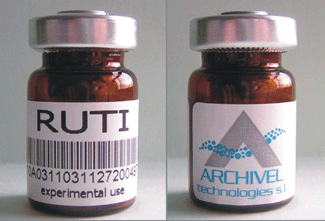A vaccination to shorten treatment of Tuberculosis

A group of research scientists at the Experimental Tuberculosis Unit of the Fundació Institut Germans Trias i Pujol have created a vaccination that reduces the length of treatment of the latent infection which causes tuberculosis from nine months to only one month.
Infection by Mycobacterium Tuberculosis is characterised basically by its ability to generate a latent tuberculosis infection (ITBL). This means that in most cases (90%), humans are able to control it, generate an efficient immunity (which shows up in a tuberculin test) and do not even notice that they are infected. Unfortunately, the other 10% develop Tuberculosis (TB), a chronic illness with a high mortality. Current epidemiological data are clear: a third of the world’s population has ITBL (we are speaking about 2000 million people), each year between 80 and 100 million are infected; there are 9 million new cases of TB, and more than 2 million people die.
Unfortunately, until recently, the standard treatment of ITBL was based on the administration of a drug, isoniazide, for 9 months, a fact that complicated its efficiency.
In this article we revise a study of the psychopathological evolution of tuberculosis lesions in the model of experimental tuberculosis in mice. Our group has designed a therapeutical vaccination (RUTI) that allows for a reduction in the chemotherapeutical treatment of ITBL from 9 to 1 month. The basic principles were three. On the one hand the Koch phenomenon, a reaction triggered by vaccination in infected people with extracts of M. Tuberculosis, was linked to the presence of endotoxins in the extracts and to the inflammatory response in the lesions, rather than to immunity itself. On the other hand the fact that in the chronic stage of the infection, the very same macrophages by "opening up" with the detritus of the lesion and, turning into foamy macrophages "drain" the bacteria from the inside of lesions to the exterior of the alveolar spaces where they reactivate. Therefore, the stress generated against the bacteria by the response, turns them into latent bacteria, and as such "invisible" to the immune system. Finally we were able to show that a short antibiotic treatment led to the disappearance of foamy macrophages, but however, reduced the immune response, allowing the latent bacteria to reactivate.
For this reason, RUTI was developed, from cellular fragments of M. Tuberculosis cultivated in stress conditions, from which the endotoxins were extracted, and which was then administered in a short antibiotic treatment (1 month) generating a poliantigenic immune response against the latent bacteria after having eliminated the local inflammatory focus (thereby avoiding Koch's reaction) and foamy macrophages. At present RUTI is produced by the pharmaceutical company Archivel Farma, s.l. in Mataró, and the first Clinical Trials are planned for the end of the year.
Pere-Joan Cardona
Universitat Autònoma de Barcelona
References
Article: "RUTI: A new chance to shorten the treatment of latent tuberculosis infection" Cardona, PJ. TUBERCULOSIS, 86 (3-4): 273-289 MAY-JUL 2006


